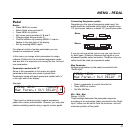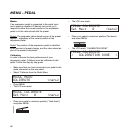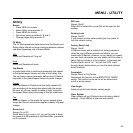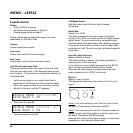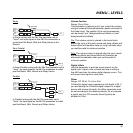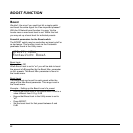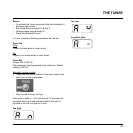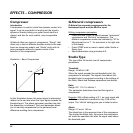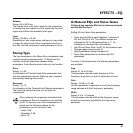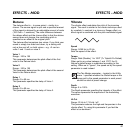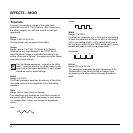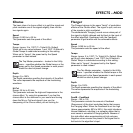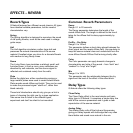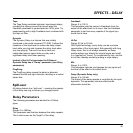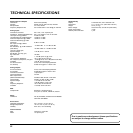
31
EFFECTS - DELAY
Tape
The Tape Delay simulates historical, tape-based delays,
including the clipping sound that occurs when the
Feedback parameter is yanked past the 100% point. Try
experimenting with a high Feedback level combined with
the high-cut filter.
Dynamic
The Dynamic Delay is a feature that was initially
introduced in the world renowned TC 2290. It allows the
dynamics of the input level to reduce the delay output
level while you play and increase the delay level when
you stop playing. The result can be a clear and
undisturbed source signal while you play and a
significant delay level when pausing.
Instead of the Hi-Cut parameter the G-Natural
Dynamic Delay has a “Damp” parameter. (see Delay
parameters)
PingPong
The PingPong delay causes the delay to alternate
between the left and right channels, resulting in a radical
stereo feel.
Spill-over
All delays feature true “spill-over” – meaning the repeats
of the delay can ring out when you change presets.
Delay Parameters
The following parameters are identical for all Delay
types.
Delay
Range: 0 to 1800ms
This parameter sets the time between the delay repeats.
This is also known as the “length” of the delay.
Feedback
Range: 0 to 100 %
This parameter sets the amount of feedback from the
output of the effect back to its input. Use the Feedback
parameter to set how many repeats of the signal you
would like to have.
Hi-Cut
Range: 20 Hz to 20 kHz
With digital technology, every delay can be a precise
reproduction of the Input signal. But especially with long
Delay times, this is not always desirable, as these
pristine delays may disturb the original signal and result
in a “washed-out” sound. To compensate for this, use the
hi-cut filter, thereby emulating analog or style delays.
Mix
Range: 0 to 100%
This parameter sets the mix between the dry signal and
the level of the effect in this effect block.
Damp (Dynamic Delay only)
Range: 0 to 100 dB
The output of the delay repeats is controlled by the input
dynamics. This parameter sets how effective the
attenuation should be.



